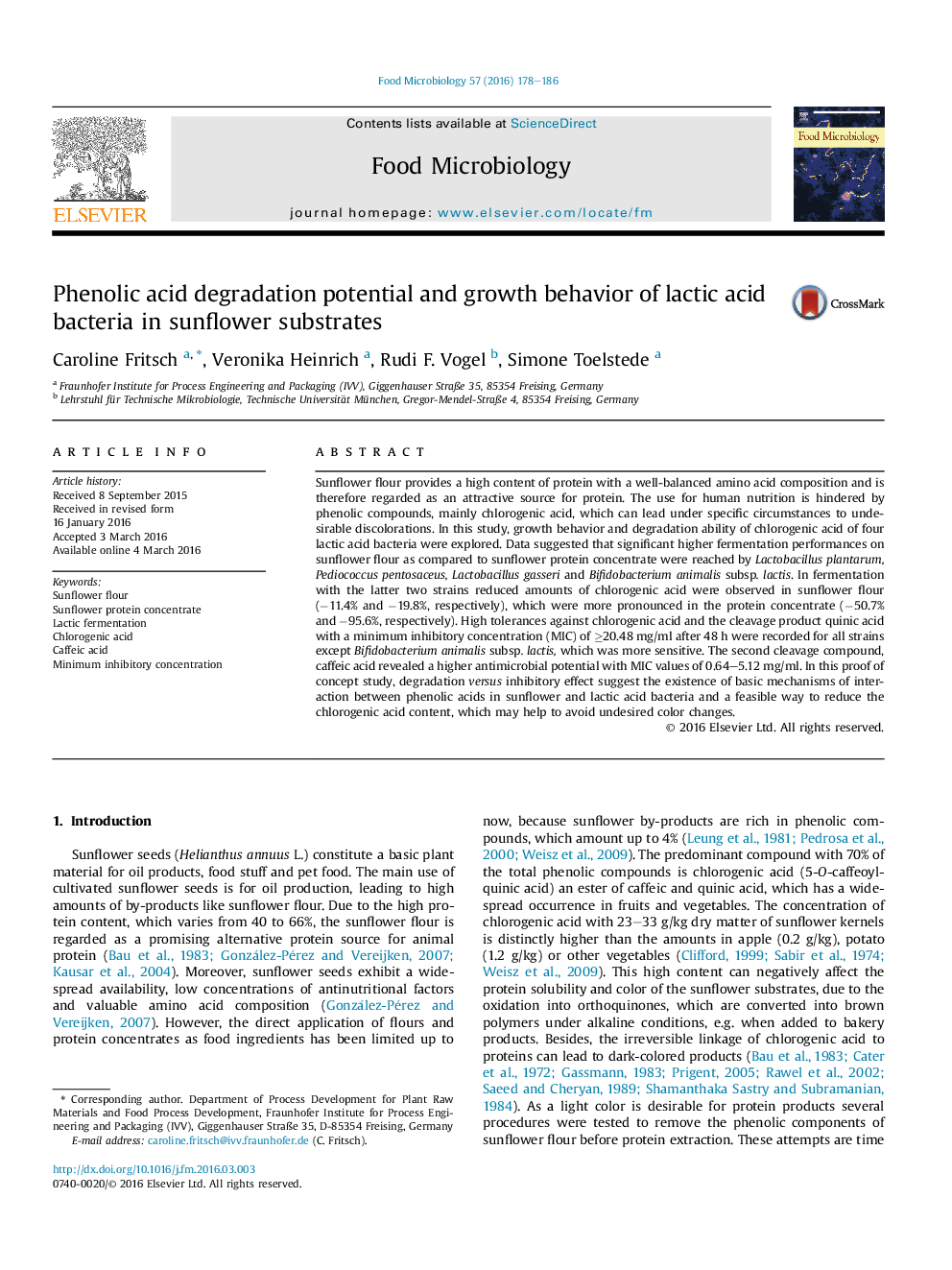| Article ID | Journal | Published Year | Pages | File Type |
|---|---|---|---|---|
| 4362615 | Food Microbiology | 2016 | 9 Pages |
•Sunflower flour is a suitable substrate for lactic fermentation.•Bifidobacterium animalis subsp. lactis and Lb. gasseri markedly degraded chlorogenic acid.•Lactic acid bacteria showed high tolerances against chlorogenic acid (high MICs).
Sunflower flour provides a high content of protein with a well-balanced amino acid composition and is therefore regarded as an attractive source for protein. The use for human nutrition is hindered by phenolic compounds, mainly chlorogenic acid, which can lead under specific circumstances to undesirable discolorations. In this study, growth behavior and degradation ability of chlorogenic acid of four lactic acid bacteria were explored. Data suggested that significant higher fermentation performances on sunflower flour as compared to sunflower protein concentrate were reached by Lactobacillus plantarum, Pediococcus pentosaceus, Lactobacillus gasseri and Bifidobacterium animalis subsp. lactis. In fermentation with the latter two strains reduced amounts of chlorogenic acid were observed in sunflower flour (−11.4% and −19.8%, respectively), which were more pronounced in the protein concentrate (−50.7% and −95.6%, respectively). High tolerances against chlorogenic acid and the cleavage product quinic acid with a minimum inhibitory concentration (MIC) of ≥20.48 mg/ml after 48 h were recorded for all strains except Bifidobacterium animalis subsp. lactis, which was more sensitive. The second cleavage compound, caffeic acid revealed a higher antimicrobial potential with MIC values of 0.64–5.12 mg/ml. In this proof of concept study, degradation versus inhibitory effect suggest the existence of basic mechanisms of interaction between phenolic acids in sunflower and lactic acid bacteria and a feasible way to reduce the chlorogenic acid content, which may help to avoid undesired color changes.
